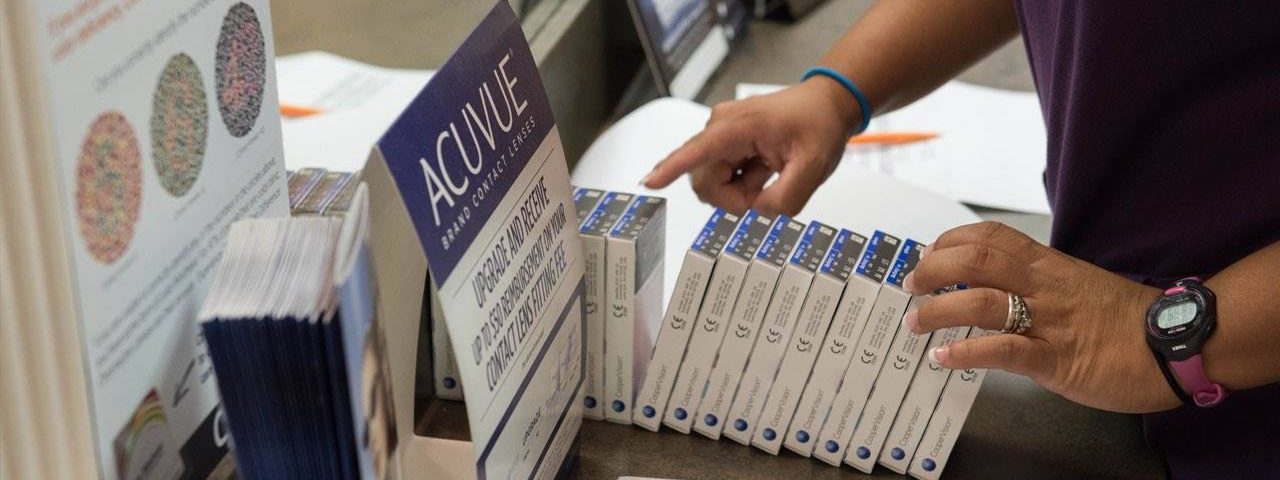How Contact Lenses are Made
Contact lenses are immensely popular, with a wide variety of types to fit almost every individual and their vision condition. New materials and modern technology have led to increased comfort, higher convenience, and sharper vision with contacts. In response, many people are now making the switch away from wearing eyeglasses for vision correction. Our expert optometrist performs eye exams and fittings for contact lenses regularly.
How & What Are Contact Lenses Made Of?
There are two main types of lenses: Soft Contacts, and Rigid Gas Permeable (RGP).
Soft contact lenses are usually manufactured by a process called injection molding. The lens material is heated until melting point and then injected into a mold. Once the material dries, it takes on the contact lens shape of the mold. Sometimes, extra material must be removed before polishing this lens.
Most of the time, hydrogel is used as the material for soft lenses. This polymer is very water-absorbent, and a high water content allows more oxygen to reach the eye. Some soft contact lenses contain as much as 70% water! One drawback is that a high quantity of water also increases the size of the lens, which some people find irritating. Less water leads to a thinner, more comfortable lens.
Soft lenses made from silicone hydrogel are newer on the scene. This advanced materials enables increased oxygen permeability without the added size of larger lenses. Many of our patients report high comfort satisfaction with their silicone hydrogel lenses.
Rigid gas permeable lenses are sculpted into shape with the aid of specialized lathe cutting tools. Lens material is carved into a precision-cut lens and then polished. The level of accuracy and precision used to make RGP lenses is superior to soft contact lenses. In general, this process is therefore used for more complex lens prescriptions and shapes, such as progressive lenses.
Hard contact lenses are composed of hard polymers (plastics) that have a naturally high porosity. Therefore, a large quantity of oxygen reaches the eye efficiently – without any water content in the lens. Flourine is added to RGP lenses to enhance oxygen permeability, as it acts to form microscopic pores in the solid lenses. This facilitates long-term, healthy wearing of hard lenses. After an adjustment period for your eyes to adapt to hard lenses, you’ll benefit from crisp visual clarity.
How Are Colored Contacts Made?
Colored contacts enhance or change your look with a new eye color. Typically, advanced color technology is used to tint the area of the soft contact lenses that covers the primary pigment of your eye. While your eyes will appear different to others, your clear and transparent vision won’t be affected. Available only by prescription, our optometrist will help you choose the most appropriate colored contacts for your eyes!
Where Can I Find Quality Contact Lenses Near Me?
In addition to answering your questions about how contact lenses are made, our contact lens team is pleased to answer this question too!
If you’re looking for an alternative to eyeglasses, our optometrist will perform a thorough eye examination for contact lenses. We’ll fit you with the ideal lenses – either soft contacts, rigid gas permeable, and specialty types, such as progressive lenses and colored contacts – in our hi-tech office.




